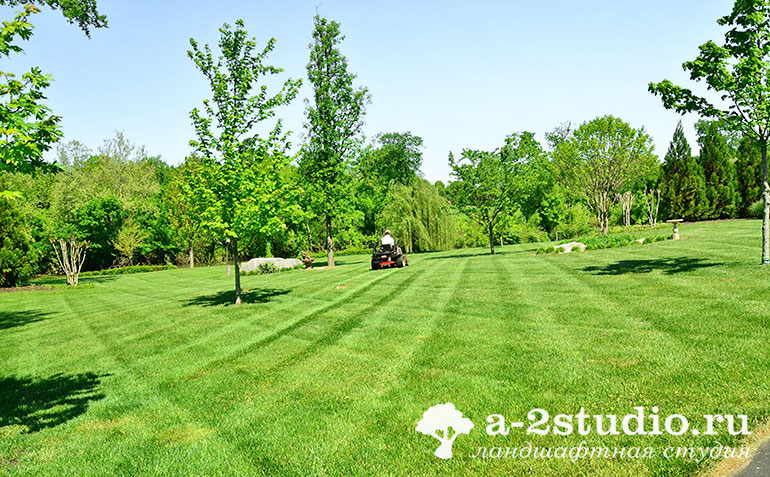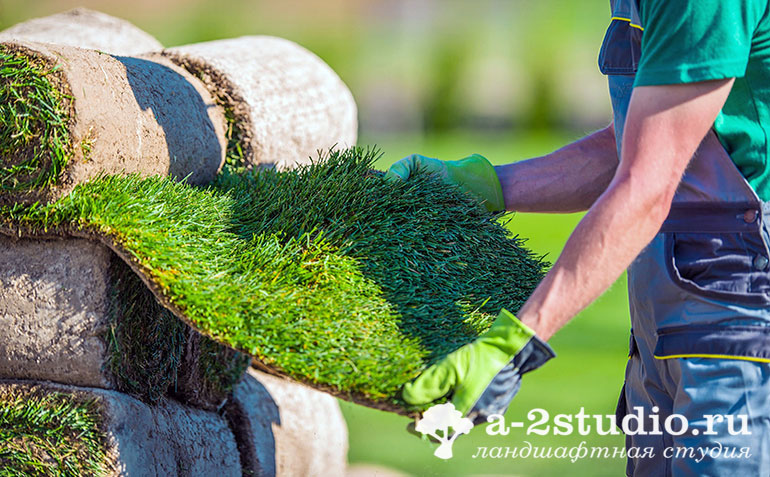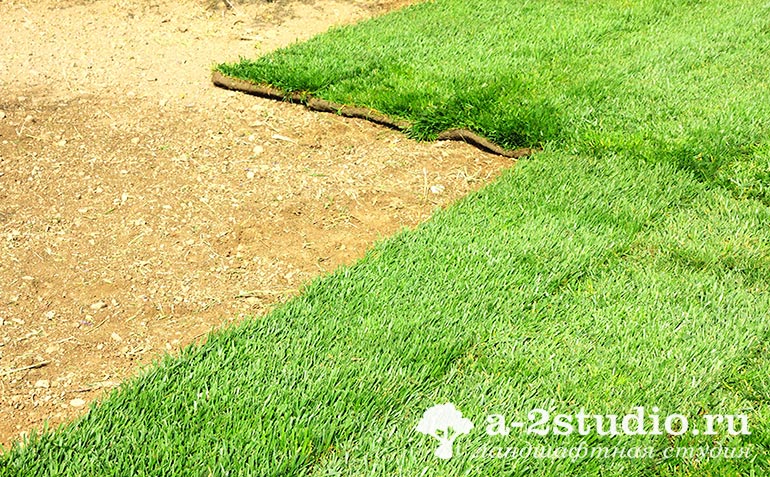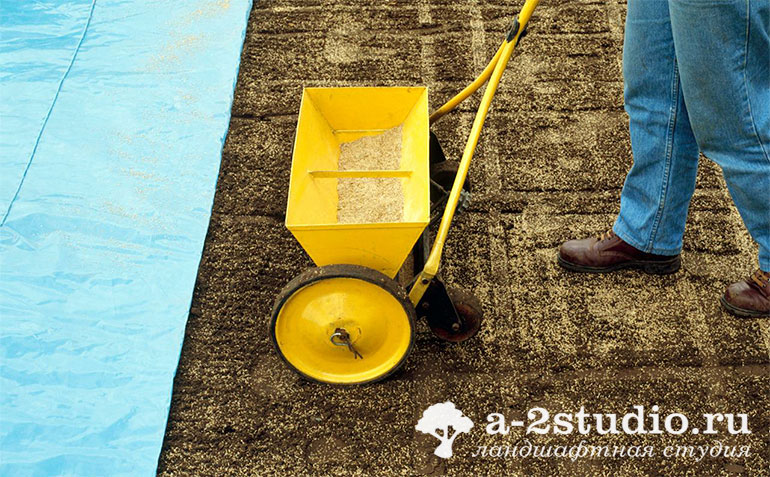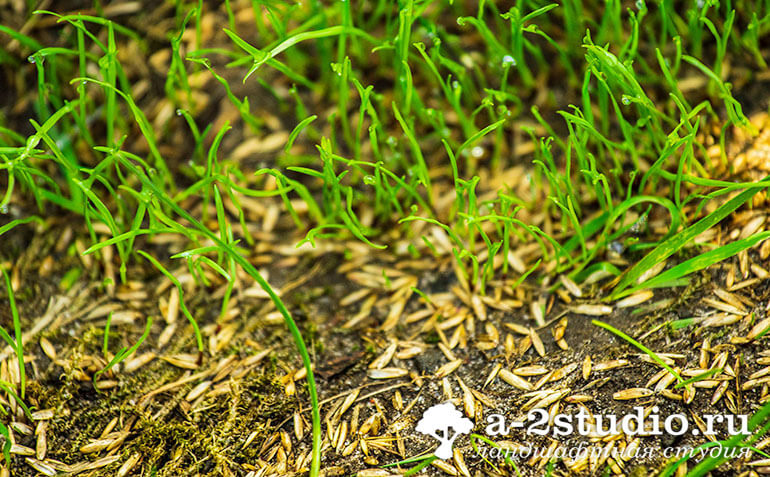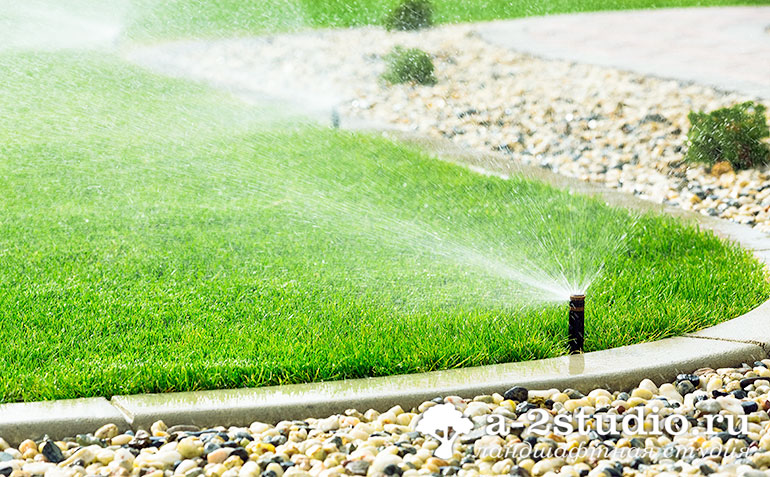Lawn creation and maintenance
The lawn is the most important decoration of the site. The English word "lawn" comes from the Celtic name for flat open space between wooded areas. For centuries such green lawns have been used as places for recreation and games.
Any modern garden is hard to imagine without a lawn. It can completely transform the look of your site, allows you to combine all the elements of the garden into a single composition. The lawns themselves are surprisingly attractive and in perfect harmony with the surrounding landscape. Especially if you complement them with garden sculptures.
In addition, lawns trap noise, absorb dust. Lawn plants have a pronounced phytoncidal effect - they purify soil and air from harmful microorganisms. Other lawns also perform a number of purely technical functions: securing the slopes, etc.
Types of lawns
For their purpose, lawns are divided into decorative, sports and special purpose lawns.
Decorative lawns
These are Moorish, meadow, parterre, common and soil-covered lawns. To create any lawn, fertile soil is needed. The predominant soils of our zone are sod-podzolic soils with low natural fertility. The bulk of the lawn grass roots are located in a soil layer of 5-10 cm. First it is necessary to conduct soil agrochemical analyses. Mandatory soil characteristics are humus content, acidity, available phosphorus content and potassium exchange. The mechanical composition of the soil is determined.
- Mauritian lawn.
Create low flowering cereals in a mixture of beautifully blooming annual plants, the range of which is selected according to the constant flowering of one or more species throughout the season. - Meadow lawn.
They dig up the soil and fertilize it, and after planning the land they sow. For sowing, a mixture consisting of pasture ryegrass, red fescue, meadow mint is most often used. Can be used with cereal grasses and legumes (different types of clover). - Parterre lawn.
This is a ceremonial, classic look. If the soil is clayey or sandy, it is necessary to remove the upper 10-15 cm horizon, create a drainage horizon of gravel and sand, create a fertile ground when organizing a parterre lawn. The imported soil should be an average loam rich in organic matter. The imported soil is limed, fertilized with mineral or organomineral fertilizers. - Ordinary lawn.
The 5-10 cm layer of soil is removed and brings fertile soil. In the brought soil added fertilizer, lime materials. If the soil is fertile enough, they dig it up. Apply the required amount of fertiliser and lime. Areas with sandy soils have poor retention of nutrients and moisture, and therefore the application of clay soil and peat is necessary. - Lawns of soil-covered plants.
Arranged most often in cases where the conditions of cereal grass growth and care are difficult.
Moorish lawns and lawns made of soil-covered plants are not mowed.
Sporty lawns
Sports lawns are characterised by a dense elastic turf cover of trampling resistant cereal plants.
Special purpose lawns
Special purpose lawns are located on slopes and slopes of roads, hydraulic structures, banks of rivers and canals.
Creating lawns: sowing or stowing
It is best to create a lawn in the final stage of land improvement. This makes it possible to reduce the cost of work and avoid additional overhead costs when setting up lawns. For example, you need to complete the laying of paths, drainage, watering, lighting and other necessary landscaping work before setting up your lawn. Otherwise, the cost of alterations to the lawn can increase it many times.
There are two ways to create a lawn:
- Sowing the lawn.
Creating a lawn will take about 20-30 days, but its cost is relatively low. In the long term, a naturally cultivated grass cover from the seeds at the planting site will be more adapted, more viable and more durable than a finished one. The sowing lawn is perfectly suited to uneven terrain. - Laying a roll up lawn.
Rolled lawn is a mowing lawn from a nursery. Over 2-3 years, perennial grasses form a strong interweaving of roots in the turf, which allows you to carefully cut layers of such a lawn with the soil, roll them up, transport and very quickly lay on the customer's site.
This is a wonderful way to quickly and effortlessly turn bare soil into a beautiful green lawn. One day - and the plot at the cottage or office, sports or children's playground, park, square or roadside will be beautiful and well-groomed.
The ready-made roll turf is superior to the sown turf in terms of grass quality and cover density, it costs more, but there are almost no weeds due to the excellent care in the nursery.
Lawn care
Landscape Studio A2 has many years of experience in lawn building, initial care and further maintenance.
- Lawn mowing.
Necessary to maintain the appearance, as a means of combating annual weeds, as well as mowing the lawn produces resistance to trampling. - Watering the lawn.
An important lawn care event. Before creating a lawn, the specialists of the A2 Landscape Studio will provide a method of watering or plan an irrigation system. Moisture is one of the prerequisites for plant growth and development, including perennial grasses. It is especially necessary on light, sandy soils with deeply standing ground waters, where rainwater quickly goes deep into the soil.
To increase the drought tolerance of the grass in such areas, as well as in dry regions, the following measures should be taken: apply phosphate fertilizers in autumn or early spring to stimulate root formation; mulch the surface of lawns, which reduces evaporation of moisture from the soil.
Watering - stimulates new escapes. It is better to carry it out in the evening, because during the night the water will be well absorbed and will be absorbed not only by the upper part of the plant root system, but also by roots in deeper soil layers. Water evaporates quickly during the daytime. Watering should be abundant, but avoid the formation of puddles, as some types of grass can not stand flooding. For faster grass growth, water the lawn immediately after mowing, sowing or seeding. For convenience, you should use modern stationary sprinklers. - Weeding the lawn.
Even if you have carefully prepared the land before planting, the weeds will still germinate. Their seeds can bring both birds and wind. The weed takes away moisture and nutrients from the grass, destroys the layer of dense turf and, of course, spoils its appearance. Removal of weed vegetation occurs in the germination stage. The perennials should be dug out together with the root with a narrow scoop. Damaged soil is compacted and watered. - Feeding the lawn.
Like all plants, the lawn needs regular fertilisation with mineral fertilisers. The fertiliser starts to be applied in early spring until mid-summer and in autumn, preferably in September, to prepare the lawn for wintering. - Lawn aeration.
In order to facilitate the penetration of water and air into the lower layers of the ground, it is necessary to pierce the soil on the lawn surface. - Cleaning the lawn.
It's done in spring and autumn, using a fan rake. Dry grass residues left over from autumn can inhibit plant growth and fallen leaves can help loosen the lawn. In order to avoid this, the leaves must be removed.
Having ordered a lawn from us, you will get not only a correctly executed beautiful lawn and designed irrigation system taking into account the peculiarities of your site, but also professional advice on further lawn care.
You can see photos of different types of lawns and objects already made in our photo gallery.

